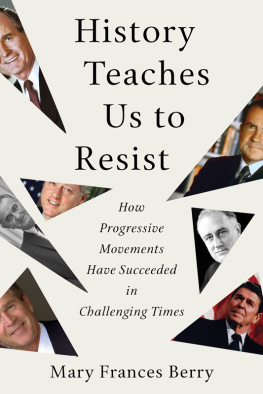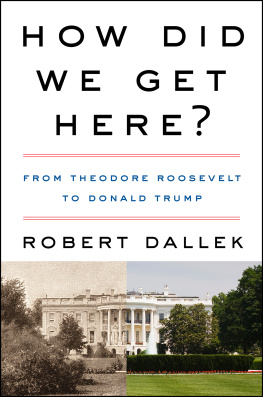Mary Frances Berry - History Teaches Us to Resist: How Progressive Movements Have Succeeded in Challenging Times
Here you can read online Mary Frances Berry - History Teaches Us to Resist: How Progressive Movements Have Succeeded in Challenging Times full text of the book (entire story) in english for free. Download pdf and epub, get meaning, cover and reviews about this ebook. year: 2018, publisher: Beacon Press, genre: Politics. Description of the work, (preface) as well as reviews are available. Best literature library LitArk.com created for fans of good reading and offers a wide selection of genres:
Romance novel
Science fiction
Adventure
Detective
Science
History
Home and family
Prose
Art
Politics
Computer
Non-fiction
Religion
Business
Children
Humor
Choose a favorite category and find really read worthwhile books. Enjoy immersion in the world of imagination, feel the emotions of the characters or learn something new for yourself, make an fascinating discovery.
- Book:History Teaches Us to Resist: How Progressive Movements Have Succeeded in Challenging Times
- Author:
- Publisher:Beacon Press
- Genre:
- Year:2018
- Rating:3 / 5
- Favourites:Add to favourites
- Your mark:
History Teaches Us to Resist: How Progressive Movements Have Succeeded in Challenging Times: summary, description and annotation
We offer to read an annotation, description, summary or preface (depends on what the author of the book "History Teaches Us to Resist: How Progressive Movements Have Succeeded in Challenging Times" wrote himself). If you haven't found the necessary information about the book — write in the comments, we will try to find it.
Despair and mourning after the election of an antagonistic or polarizing president, such as Donald Trump, is part of the push-pull of American politics. But in this incisive book, historian Mary Frances Berry shows that resistance to presidential administrations has led to positive change and the defeat of outrageous proposals, even in challenging times. Noting that all presidents, including ones considered progressive, sometimes require massive organization to affect policy decisions, Berry cites Indigenous peoples protests against the Dakota pipeline during Barack Obamas administration as a modern example of successful resistance built on earlier actions.
Beginning with Franklin D. Roosevelt, Berry discusses that presidents refusal to prevent race discrimination in the defense industry during World War II and the subsequent March on Washington movement. She analyzes Lyndon Johnson, the war in Vietnam, and the antiwar movement and then examines Ronald Reagans two terms, which offer stories of opposition to reactionary policies, such as ignoring the AIDS crisis and retreating on racial progress, to show how resistance can succeed.
The prochoice protests during the George H. W. Bush administration and the opposition to Bill Clintons Dont Ask, Dont Tell policy, as well as his budget cuts and welfare reform, are also discussed, as are protests against the war in Iraq and the Patriot Act during George W. Bushs presidency. Throughout these varied examples, Berry underscores that even when resistance doesnt achieve all the goals of a particular movement, it often plants a seed that comes to fruition later.
Berry also shares experiences from her six decades as an activist in various movements, including protesting the Vietnam War and advocating for the Free South Africa and civil rights movements, which provides an additional layer of insight from someone who was there. And as a result of having served in five presidential administrations, Berry brings an insiders knowledge of government.
History Teaches Us to Resist is an essential book for our times which attests to the power of resistance. It proves to us through myriad historical examples that protest is an essential ingredient of politics, and that progressive movements can and will flourish, even in perilous times.
Mary Frances Berry: author's other books
Who wrote History Teaches Us to Resist: How Progressive Movements Have Succeeded in Challenging Times? Find out the surname, the name of the author of the book and a list of all author's works by series.














